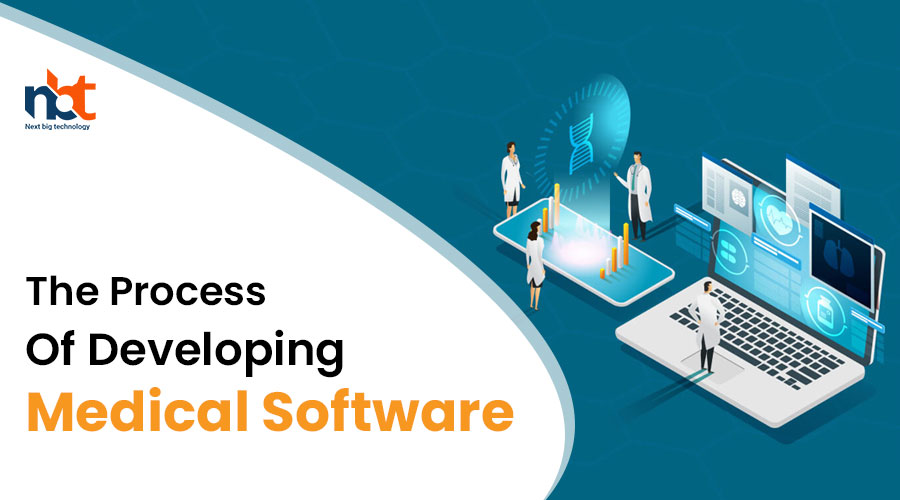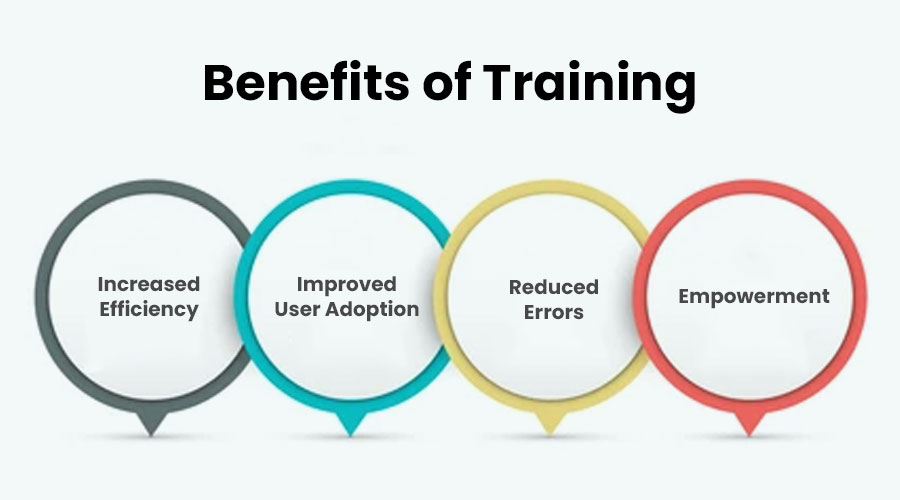Table of Contents
Understanding User Needs and Requirements
In the dynamic landscape of product development and service provision, one principle stands tall above the rest: understanding user needs and requirements. It’s the cornerstone upon which successful businesses are built, driving innovation, enhancing user experiences, and ultimately fostering long-term loyalty. But what does it truly mean to grasp the intricacies of user needs, and how can businesses effectively translate these insights into actionable strategies? Let’s delve into the depths of this crucial aspect of user-centric design.
The Heart of User-Centric Design: At its core, user-centric design revolves around empathy—the ability to place oneself in the shoes of the user, comprehending their goals, motivations, and pain points. It’s about transcending assumptions and embracing a mindset of curiosity and inquiry. By actively listening to users, observing their behaviors, and soliciting their feedback, businesses can uncover invaluable insights that pave the way for tailored solutions.
Unraveling User Needs: User needs encompass a spectrum of desires, preferences, and expectations that individuals seek to fulfill through a product or service. These needs can be functional, addressing specific tasks or functionalities required to accomplish a goal. They can also be emotional, catering to the psychological and social aspects of user experience, such as convenience, enjoyment, or status.
The Role of Requirements: While user needs define the ‘what,’ requirements delineate the ‘how.’ Requirements translate user needs into tangible specifications and features that guide the design and development process. They serve as the blueprint for creating solutions that align with user expectations while factoring in technical constraints, budget limitations, and market dynamics.
Techniques for Understanding User Needs: Several methodologies and techniques exist to unearth user needs effectively. User interviews, surveys, and focus groups provide direct avenues for gathering qualitative insights straight from the source. Observational research, including ethnographic studies and contextual inquiry, offers a window into users’ natural environments and behaviors. Additionally, techniques like personas, journey mapping, and user story mapping help synthesize diverse user perspectives into coherent narratives that inform decision-making.
The Iterative Nature of Understanding User Needs: Understanding user needs is not a one-time endeavor but an ongoing journey of discovery and refinement. As markets evolve, technologies advance, and user preferences shift, businesses must continuously reassess and adapt their understanding of user needs. Embracing an iterative approach allows for continuous improvement, enabling organizations to stay attuned to changing dynamics and emerging opportunities.
Bridging the Gap Between Users and Solutions: Ultimately, the goal of understanding user needs and requirements is to bridge the gap between users and solutions seamlessly. By aligning product offerings with user expectations and aspirations, businesses can cultivate meaningful experiences that resonate with their target audience. Whether it’s streamlining workflows, enhancing usability, or delighting users with innovative features, every decision should be rooted in a deep understanding of user needs.
Research and Analysis of Existing Solutions
Innovation often sprouts from a thorough understanding of existing solutions, their strengths, weaknesses, and the gaps they leave behind. Whether in technology, healthcare, or environmental sustainability, conducting comprehensive research and analysis is the cornerstone of progress. In this article, we delve into the importance of researching existing solutions across various domains and how it fuels innovation.
Understanding the Status Quo: Before embarking on any journey of innovation, it’s essential to grasp the current landscape. This involves identifying existing solutions, understanding their methodologies, and evaluating their effectiveness. By comprehensively examining what already exists, innovators gain valuable insights into the challenges that need to be addressed and the opportunities for improvement.
Identifying Gaps and Limitations: No solution is perfect, and every innovation stems from addressing existing gaps and limitations. Through meticulous analysis, researchers can pinpoint areas where current solutions fall short. These could range from inefficiencies in processes to inadequacies in addressing specific needs or demographics. By identifying these gaps, innovators can direct their efforts towards developing more robust and inclusive solutions.
Leveraging Best Practices: Researching existing solutions isn’t just about identifying flaws; it’s also about recognizing what works well. By studying successful methodologies and best practices, innovators can draw inspiration and leverage proven strategies in their own endeavors. This not only accelerates the innovation process but also minimizes the risks associated with trial and error.
Fostering Collaboration and Knowledge Sharing: Research and analysis of existing solutions promote collaboration and knowledge sharing within and across industries. By sharing insights and lessons learned, organizations can avoid duplicating efforts and build upon each other’s successes. Collaboration not only accelerates innovation but also fosters a culture of collective problem-solving and continuous improvement.
Driving Sustainable Innovation: Sustainability lies at the heart of effective innovation. By understanding the environmental, social, and economic impacts of existing solutions, researchers can develop innovations that are not only technologically advanced but also sustainable in the long run. This holistic approach ensures that innovation isn’t just about solving immediate challenges but also about creating a better future for generations to come.
Designing User Interfaces and Workflows
In today’s digital landscape, where user experience reigns supreme, designing intuitive and visually appealing user interfaces (UIs) is paramount for the success of any product or service. A well-designed UI not only captivates users but also guides them effortlessly through workflows, ensuring a seamless and enjoyable experience. In this article, we delve into the art and science of designing user interfaces and workflows, exploring key principles and best practices to create interfaces that users love.
Understanding User Needs and Goals: At the heart of effective UI design lies a deep understanding of user needs and goals. Before diving into the design process, it’s crucial to conduct thorough research to comprehend the target audience, their preferences, pain points, and behavior patterns. By empathizing with users, designers can tailor UIs to meet their expectations, ultimately enhancing user satisfaction and engagement.
Simplicity and Clarity: Simplicity is the hallmark of great UI design. A cluttered interface overwhelms users and hampers their ability to accomplish tasks efficiently. Designers should strive for clarity by eliminating unnecessary elements and focusing on essential features. Intuitive navigation and clear visual hierarchy guide users through workflows seamlessly, reducing cognitive load and fostering a sense of control and confidence.
Consistency and Familiarity: Consistency breeds familiarity, which is essential for usability. Maintaining consistency in design elements such as layout, typography, color schemes, and interaction patterns across the UI fosters a sense of coherence and predictability. Users should feel comfortable and confident navigating the interface, knowing what to expect at every turn. Consistent design also enhances brand identity and fosters trust among users.
Responsive and Adaptive Design: With the proliferation of devices and screen sizes, designing responsive and adaptive interfaces has become imperative. A responsive design ensures that UIs adapt seamlessly to various screen sizes and orientations, providing a consistent user experience across devices. Adaptive design goes a step further by tailoring the UI to the specific capabilities and constraints of each device, optimizing usability and performance.
Iterative Design Process: UI design is an iterative process that involves continuous refinement based on user feedback and testing. Designers should adopt an agile approach, creating prototypes and conducting usability tests to gather insights and identify areas for improvement. By iterating on designs based on user input, designers can refine workflows, eliminate friction points, and optimize the overall user experience.
Accessibility and Inclusivity: Accessibility should be a top priority in UI design to ensure that everyone, regardless of ability, can access and interact with the interface effectively. Designing with accessibility in mind involves considerations such as providing alternative text for images, ensuring proper color contrast for readability, and implementing keyboard navigation options. By prioritizing inclusivity, designers create UIs that are usable by all users, regardless of their abilities.
Establishing Regulatory Compliance Standards
In an ever-evolving global marketplace, regulatory compliance stands as a cornerstone of ethical business practices. From financial institutions to healthcare providers, adherence to established regulations ensures accountability, transparency, and the protection of stakeholders. As industries expand and technologies advance, the need for robust regulatory frameworks becomes increasingly apparent.
Understanding Regulatory Compliance:
Regulatory compliance refers to the adherence to laws, regulations, guidelines, and specifications relevant to a particular industry. These regulations are often set forth by governmental bodies or industry associations to safeguard consumer interests, maintain market stability, and prevent unlawful activities.
The Importance of Compliance Standards:
- Protection of Consumers: Compliance standards protect consumers from fraud, malpractice, and substandard products or services. By ensuring businesses operate within legal boundaries, consumers can trust in the reliability and integrity of the market.
- Maintaining Market Integrity: Compliance standards foster fair competition and prevent monopolistic practices, thereby maintaining market integrity and promoting innovation.
- Risk Mitigation: Compliance reduces the risk of legal penalties, fines, and reputational damage that can arise from non-compliance. It also helps mitigate operational risks and ensures business continuity.
Establishing Effective Compliance Standards:
- Comprehensive Regulatory Assessment: Businesses must conduct a thorough assessment of relevant regulations applicable to their industry. This involves identifying key regulations, understanding their implications, and assessing the impact on business operations.
- Implementation of Compliance Programs: Implementing robust compliance programs is essential for ensuring adherence to regulatory standards. These programs should include policies, procedures, and controls designed to monitor and enforce compliance throughout the organization.
- Regular Monitoring and Review: Compliance is an ongoing process that requires continuous monitoring and review. Businesses should regularly assess their compliance efforts, identify areas for improvement, and adapt to changes in regulatory requirements.
- Investment in Training and Education: Employee awareness and understanding of regulatory compliance are crucial for effective implementation. Investing in training and education programs ensures that employees are equipped with the knowledge and skills necessary to uphold compliance standards.
- Utilization of Technology: Leveraging technology solutions such as compliance management software can streamline compliance processes, enhance transparency, and facilitate real-time monitoring of compliance activities.
The Role of Regulatory Bodies:
Regulatory bodies play a vital role in establishing and enforcing compliance standards. Through the enactment of laws and regulations, regulatory bodies set the groundwork for ethical business conduct. Additionally, they conduct audits, investigations, and enforcement actions to ensure compliance and address instances of non-compliance.
Prototyping and Iterative Development
In the ever-evolving landscape of product development, the principles of prototyping and iterative development have become paramount. They form the cornerstone of modern approaches to creating innovative and user-centric solutions. From software applications to physical products, the process of prototyping and iterative development offers numerous benefits, ranging from minimizing risks to maximizing user satisfaction. Let’s delve into what these concepts entail and how they can be effectively implemented to achieve success in your projects.
Understanding Prototyping:
Prototyping is the process of creating a preliminary version of a product or system to evaluate its feasibility, functionality, and user experience. Unlike the final product, prototypes are typically quick, low-fidelity representations that serve the purpose of experimentation and learning. They can take various forms, including sketches, wireframes, mockups, or even functional prototypes with basic functionalities.
The Importance of Prototyping:
- Risk Mitigation: Prototyping allows you to identify potential flaws and challenges early in the development cycle, reducing the risk of costly errors in later stages.
- User Feedback: By involving users in the prototyping phase, you can gather valuable feedback and insights that inform further iterations and improvements.
- Alignment: Prototypes serve as a visual aid for communicating ideas and aligning stakeholders’ expectations, fostering collaboration and consensus among team members.
Iterative Development:
Iterative development is a methodology that emphasizes the cyclical process of building, testing, and refining a product through multiple iterations. Instead of aiming for a perfect final product from the outset, iterative development acknowledges that requirements and priorities may evolve over time. Each iteration results in a potentially shippable product increment, allowing for continuous feedback and adaptation.
Advantages of Iterative Development:
- Adaptability: By breaking down the development process into smaller, manageable increments, iterative development enables teams to respond promptly to changes in requirements or market conditions.
- Continuous Improvement: Each iteration builds upon the insights gained from previous cycles, leading to a progressively refined and optimized product.
- Time-to-Market: By delivering functional increments at regular intervals, iterative development accelerates the time-to-market, allowing for faster validation of ideas and features.
Integrating Prototyping with Iterative Development:
The synergy between prototyping and iterative development is undeniable. Prototypes serve as the foundation for each iteration, providing a tangible representation of ideas that can be tested, validated, and refined. As the product evolves through successive iterations, prototypes are continuously updated to reflect the latest enhancements and insights gathered from user feedback.
Best Practices for Success:
- Start Early: Begin prototyping as soon as possible in the development process to validate concepts and gather early feedback.
- Focus on Usability: Prioritize the user experience when creating prototypes, ensuring that they accurately represent the intended functionality and interactions.
- Embrace Feedback: Actively solicit feedback from stakeholders and end-users throughout the iterative development process, incorporating their insights to drive continuous improvement.
- Stay Agile: Embrace the principles of agility, adaptability, and collaboration to navigate uncertainties and changes effectively.
Ensuring Data Security and Patient Privacy
In the digital age, where technology intertwines seamlessly with healthcare, ensuring the security of patient data and preserving their privacy has become a paramount concern. With electronic health records (EHRs), telemedicine, and interconnected medical devices becoming the norm, healthcare organizations must prioritize robust measures to safeguard sensitive information and uphold patient confidentiality.
Data breaches and unauthorized access to patient records can have profound consequences, not only for individuals but also for healthcare providers and institutions. Apart from financial repercussions, such incidents erode patient trust, tarnish reputations, and may even result in legal ramifications. Therefore, adopting comprehensive strategies to mitigate risks and enhance data security is imperative.
One of the fundamental steps in ensuring data security is implementing stringent access controls. Healthcare facilities should enforce protocols that restrict access to patient information based on the principle of least privilege. This means that only authorized personnel with a legitimate need should have access to specific data, and access privileges should be regularly reviewed and updated.
Encryption serves as another vital safeguard for protecting sensitive healthcare data. By encrypting data both in transit and at rest, healthcare organizations can prevent unauthorized individuals from intercepting or deciphering patient information. Implementing encryption protocols compliant with industry standards adds an additional layer of security, ensuring that even if data is compromised, it remains indecipherable to unauthorized parties.
Regular security audits and vulnerability assessments are essential components of a robust data security strategy. Healthcare organizations should conduct periodic assessments to identify potential weaknesses in their systems and processes. By proactively addressing vulnerabilities, organizations can preemptively fortify their defenses and reduce the risk of breaches or unauthorized access.
Moreover, fostering a culture of data security and privacy awareness among employees is crucial. Training programs should educate staff members about the importance of protecting patient information, recognizing potential security threats, and adhering to established protocols. Employees should be vigilant against social engineering tactics, such as phishing attempts, which are often used to gain unauthorized access to sensitive data.
Compliance with regulatory frameworks, such as the Health Insurance Portability and Accountability Act (HIPAA) in the United States, is non-negotiable for healthcare organizations. These regulations outline specific requirements for safeguarding patient data and impose penalties for non-compliance. By adhering to regulatory standards and staying abreast of updates, healthcare providers demonstrate their commitment to protecting patient privacy and maintaining data security.
Furthermore, adopting advanced technologies, such as blockchain, holds promise for enhancing data security and integrity in healthcare. Blockchain technology offers immutable, decentralized ledgers that can securely store and share healthcare data, reducing the risk of tampering or unauthorized access. Integrating blockchain solutions into existing infrastructure can bolster data security while ensuring transparency and accountability.
Testing for Accuracy and Reliability
In a world increasingly reliant on data and information, ensuring accuracy and reliability is paramount. Whether it’s in scientific research, product development, or even everyday decision-making, the consequences of inaccurate or unreliable information can be significant. This is where testing plays a crucial role.
Testing for accuracy and reliability involves a systematic approach to verify the correctness and dependability of data, processes, products, or systems. It’s about confirming that what is claimed to be true or valid actually holds up under scrutiny. Here, we delve into why testing is essential and explore some common methods used across different domains.
Why is Testing Important?
- Maintaining Trust: Trust is the foundation of any relationship, whether it’s between a consumer and a product or between researchers and their findings. Testing ensures that the information provided can be trusted, fostering confidence and credibility.
- Minimizing Errors: Human error is inevitable, but testing helps catch and rectify mistakes before they escalate. By identifying and fixing errors early on, testing minimizes the risk of costly consequences down the line.
- Improving Quality: Consistently high-quality results are key to success in any endeavor. Testing allows for the identification of areas for improvement, leading to enhanced quality standards and better outcomes.
- Meeting Standards and Regulations: Many industries are subject to strict standards and regulations to ensure safety, reliability, and compliance. Testing ensures that these standards are met, safeguarding both businesses and consumers.
Common Testing Methods
- Statistical Testing: Statistical methods are widely used to test hypotheses and make inferences about populations based on sample data. Techniques such as hypothesis testing, regression analysis, and analysis of variance (ANOVA) help assess the accuracy and reliability of findings in various fields, including science, economics, and social research.
- Quality Assurance Testing: In product development, quality assurance (QA) testing is essential to ensure that products meet predefined quality standards. This can involve functional testing, performance testing, usability testing, and compatibility testing, among others, to validate the product’s accuracy and reliability under different conditions.
- Diagnostic Testing: Diagnostic tests are used to identify the presence or absence of a particular condition or characteristic. From medical diagnostics to software debugging, these tests play a crucial role in ensuring accuracy and reliability by pinpointing issues and providing actionable insights for resolution.
- Validation and Verification Testing: Validation testing confirms that a product or system meets the requirements and fulfills its intended purpose, while verification testing ensures that the product or system complies with specified standards and regulations. Together, these tests help guarantee the accuracy and reliability of the final deliverable.
Addressing Accessibility and Usability Issues
In today’s digital age, accessibility and usability are not just buzzwords; they are fundamental pillars of inclusive design that hold the power to transform the way we interact with technology. As technology continues to permeate every aspect of our lives, ensuring that digital platforms, websites, and applications are accessible to all individuals, regardless of their abilities or disabilities, becomes increasingly imperative.
Accessibility and usability go hand in hand, yet they address different facets of the user experience. Accessibility focuses on ensuring that digital content and interfaces are perceivable, operable, understandable, and robust for all users, including those with disabilities. On the other hand, usability encompasses the overall ease of use and effectiveness of a digital product, taking into account factors such as intuitiveness, efficiency, and user satisfaction.
Addressing accessibility and usability issues is not only a moral obligation but also makes good business sense. With approximately 15% of the world’s population living with some form of disability, neglecting accessibility can alienate a significant portion of potential users and customers. Moreover, accessible design often benefits everyone, not just those with disabilities, by improving overall usability and user experience.
One of the key principles of inclusive design is to involve users with disabilities in the design process from the outset. By actively engaging with individuals who have diverse abilities and needs, designers can gain valuable insights that inform the development of more accessible and usable digital solutions. Conducting usability testing with participants representing a range of abilities can uncover barriers and challenges that might otherwise go unnoticed.
When it comes to addressing accessibility and usability issues, there are several best practices that designers and developers can follow:
- Adhere to Web Content Accessibility Guidelines (WCAG): WCAG provides a set of internationally recognized standards for making web content more accessible to people with disabilities. Following these guidelines can help ensure that digital content is perceivable, operable, and understandable for all users.
- Provide Alternative Text for Images: Including descriptive alternative text for images allows screen reader users to understand the content of images on a webpage. This simple yet crucial practice enhances accessibility by providing equivalent alternatives for non-text content.
- Design for Keyboard Accessibility: Not all users can rely on a mouse or touch screen to navigate digital interfaces. Designing for keyboard accessibility ensures that users can navigate through content using only the keyboard, making it easier for individuals with motor disabilities or those who prefer keyboard shortcuts.
- Ensure Consistent and Predictable Navigation: Consistency in navigation design helps users orient themselves within a digital interface more easily. Clear and predictable navigation pathways enhance usability by reducing cognitive load and improving the overall user experience.
- Provide Clear Instructions and Error Messages: Clarity in instructions and error messages is essential for users to understand how to interact with a digital product effectively. Providing concise, easy-to-understand instructions and informative error messages helps prevent user frustration and enhances usability.
By integrating these best practices into the design and development process, organizations can create digital experiences that are more accessible and usable for everyone. Investing in accessibility not only fosters inclusivity but also contributes to improved user satisfaction, increased engagement, and enhanced brand reputation.
Collaboration with Healthcare Professionals
In today’s rapidly evolving healthcare landscape, collaboration between different stakeholders is more critical than ever. One of the key partnerships that significantly impacts patient care outcomes is that between healthcare professionals. Whether it’s doctors, nurses, pharmacists, therapists, or other allied health professionals, working together seamlessly can lead to improved patient experiences, better health outcomes, and enhanced efficiency within healthcare systems.
Why Collaboration Matters:
- Comprehensive Patient Care: Collaboration among healthcare professionals ensures that patients receive holistic care. Each member of the healthcare team brings a unique set of skills and expertise to the table, allowing for a comprehensive approach to diagnosis, treatment, and ongoing management of medical conditions.
- Shared Knowledge and Expertise: By collaborating, healthcare professionals can pool their knowledge and expertise. This collective wisdom enables them to tackle complex cases more effectively, explore innovative treatment options, and stay updated with the latest advancements in medical science.
- Improved Efficiency: When healthcare professionals collaborate, they can streamline processes, reduce duplication of efforts, and minimize errors. This leads to greater efficiency in delivering care, allowing providers to focus more time and resources on patient-facing activities.
- Enhanced Patient Safety: Collaboration fosters a culture of accountability and communication among healthcare professionals. This proactive approach helps in identifying and addressing potential risks to patient safety, such as medication errors, adverse reactions, or gaps in care coordination.
- Better Health Outcomes: Ultimately, collaboration among healthcare professionals translates into better health outcomes for patients. By working together seamlessly, providers can develop personalized care plans, monitor progress more closely, and intervene promptly when necessary, leading to improved overall health and well-being.
Strategies for Effective Collaboration:
- Clear Communication Channels: Establishing clear communication channels is essential for effective collaboration. Healthcare professionals should have mechanisms in place to share information, discuss patient cases, and coordinate care seamlessly.
- Interdisciplinary Meetings: Regular interdisciplinary meetings provide an opportunity for healthcare professionals to come together, exchange ideas, and brainstorm solutions to complex medical issues. These meetings foster collaboration and promote a team-based approach to patient care.
- Utilization of Technology: Leveraging technology can facilitate collaboration among healthcare professionals. Electronic health records (EHRs), telemedicine platforms, and secure messaging systems enable providers to share patient information securely and collaborate in real-time, regardless of their physical location.
- Respect for Each Other’s Expertise: It’s essential for healthcare professionals to respect each other’s expertise and contributions to patient care. Recognizing the unique role that each member of the healthcare team plays fosters a culture of collaboration and mutual respect.
- Continuing Education and Training: Continuous education and training are vital for healthcare professionals to stay updated with the latest advancements in their respective fields. By investing in professional development opportunities, organizations can empower their staff to deliver high-quality, evidence-based care through collaborative efforts.
Training and Support for End Users
In the fast-paced world of technology, end users play a crucial role in ensuring the smooth functioning of various systems and software. From employees in a corporate setting to customers accessing a service or product, end users interact with technology on a daily basis. However, to harness the full potential of these tools, adequate training and support are indispensable.
Understanding the Need
Effective training equips end users with the knowledge and skills required to navigate complex systems confidently. It ensures that they can leverage the features available to them efficiently, thereby enhancing productivity and minimizing errors. Additionally, providing ongoing support ensures that end users have assistance readily available whenever they encounter challenges or have questions.
Benefits of Training
- Increased Efficiency: Properly trained end users can perform tasks more efficiently, reducing the time spent on troubleshooting or figuring out how to use a system.
- Improved User Adoption: Training helps end users understand the benefits and functionalities of a system, increasing their willingness to embrace it.
- Reduced Errors: With comprehensive training, end users are less likely to make mistakes that could lead to system downtime or data breaches.
- Empowerment: When end users feel confident in their abilities to use technology effectively, they become more empowered to explore its capabilities and contribute to innovation within their organizations.
Components of Effective Training and Support
- Tailored Content: Training programs should be customized to the specific needs and skill levels of the end users. This ensures that the content remains relevant and engaging.
- Hands-On Learning: Practical exercises and simulations allow end users to apply their knowledge in a controlled environment, reinforcing learning outcomes.
- Accessible Resources: Providing access to user-friendly manuals, online tutorials, and help desks ensures that support is readily available whenever it is needed.
- Continuous Learning: Technology evolves rapidly, so ongoing training sessions and updates are essential to keep end users informed about new features and best practices.
Implementing a Training and Support Strategy:
- Assessment: Conduct a thorough assessment of the needs and skill levels of the end users to determine the scope and focus of the training program.
- Engagement: Communicate the benefits of training to end users to garner their support and participation.
- Delivery: Utilize a variety of training methods, such as in-person workshops, online modules, and video tutorials, to accommodate different learning preferences.
- Feedback Loop: Encourage end users to provide feedback on the training program and support services to identify areas for improvement.
Top Process Of Developing Medical Software Companies
In the dynamic landscape of healthcare, the demand for innovative solutions continues to surge, propelling the growth of medical software companies. Crafting top-tier medical software requires a meticulously structured development process that encompasses various stages, from ideation to implementation. Let’s delve into the essential steps involved in developing medical software companies that stand out in the industry.
-
-
Next Big Technology:

Focus Area
- Mobile App Development
- App Designing (UI/UX)
- Software Development
- Web Development
- AR & VR Development
- Big Data & BI
- Cloud Computing Services
- DevOps
- E-commerce Development
Industries Focus
- Art, Entertainment & Music
- Business Services
- Consumer Products
- Designing
- Education
- Financial & Payments
- Gaming
- Government
- Healthcare & Medical
- Hospitality
- Information Technology
- Legal & Compliance
- Manufacturing
- Media
-
- Define Clear Objectives and Requirements: Clarity in objectives and requirements is paramount for a focused development process. Collaborating closely with healthcare professionals and stakeholders helps in defining precise goals and specifications for the software. This includes outlining essential features, regulatory compliance, interoperability standards, and scalability requirements.
- Design Thinking and Prototyping: Design thinking principles come into play during the initial stages of development. Creating user personas and journey maps facilitate designing an intuitive user interface (UI) and user experience (UX). Prototyping allows for iterative refinement based on feedback, ensuring that the software meets the needs of its end-users seamlessly.
- Agile Development Methodology: Adopting an agile approach to development promotes flexibility and adaptability throughout the process. Breaking down the project into manageable sprints enables incremental development and frequent testing. This iterative process fosters collaboration, accelerates time-to-market, and ensures alignment with evolving requirements.
- Regulatory Compliance and Quality Assurance: Compliance with regulatory standards, such as HIPAA (Health Insurance Portability and Accountability Act) in the United States, is non-negotiable in medical software development. Integrating robust security measures, data encryption, and access controls safeguards patient information. Rigorous quality assurance (QA) testing, including functional, performance, and security testing, is essential to validate the software’s reliability and accuracy.
- Interoperability and Integration: In today’s interconnected healthcare ecosystem, interoperability is key. Developing software that seamlessly integrates with existing healthcare systems, electronic health records (EHRs), medical devices, and other third-party applications enhances its utility and adoption. Prioritizing interoperability fosters data exchange and collaboration among healthcare providers, improving patient care outcomes.
- User Training and Support: Even the most advanced medical software is only effective if users understand how to leverage its capabilities optimally. Providing comprehensive training programs and user documentation ensures smooth adoption and utilization. Additionally, offering responsive technical support and ongoing updates reinforces user satisfaction and loyalty.
- Continuous Improvement and Innovation: The journey doesn’t end with the launch of the software. Continuous monitoring of user feedback, performance metrics, and emerging technologies enables ongoing improvement and innovation. Regular updates, feature enhancements, and adaptation to evolving regulatory requirements keep the software relevant and competitive in the ever-evolving healthcare landscape.
FAQs On Process Of Developing Medical Software
In the fast-paced realm of healthcare technology, the development of medical software is a critical component. From streamlining patient care to enhancing diagnostic accuracy, medical software plays a pivotal role in modern healthcare delivery. However, navigating the intricacies of its development process can be daunting. To shed light on this topic, let’s delve into some frequently asked questions (FAQs) regarding the process of developing medical software.
1. What is medical software development?
Medical software development involves the creation and implementation of software solutions tailored specifically for the healthcare industry. These solutions can range from electronic health records (EHR) systems and medical imaging software to telemedicine platforms and mobile health applications. The primary goal is to leverage technology to improve patient care, optimize clinical workflows, and enhance overall efficiency within healthcare settings.
2. What are the key stages involved in developing medical software?
The development of medical software typically follows a structured process that encompasses several key stages:
- Requirements Analysis: This stage involves gathering and analyzing the functional and non-functional requirements of the software, considering factors such as user needs, regulatory compliance, and interoperability standards.
- Design and Architecture: In this stage, the software’s architecture is conceptualized, and design elements such as user interface (UI), database structure, and system integration are planned.
- Implementation: Developers write code based on the design specifications, bringing the software to life. This stage involves programming, testing, and debugging to ensure that the software functions as intended.
- Testing and Validation: Rigorous testing is conducted to identify and rectify any defects or issues within the software. Validation ensures that the software meets regulatory requirements and fulfills user needs.
- Deployment and Maintenance: Once the software has been thoroughly tested and validated, it is deployed into the production environment. Ongoing maintenance and support are provided to address any post-deployment issues and to incorporate updates or enhancements as needed.
3. What regulatory considerations are involved in developing medical software?
The development of medical software is subject to various regulatory requirements aimed at ensuring patient safety and data security. In the United States, the Food and Drug Administration (FDA) regulates medical devices, including certain types of medical software. Developers must comply with FDA guidelines, such as the Quality System Regulation (QSR) and the Software Validation Guidance for Industry, to obtain regulatory clearance or approval for their software products.
Additionally, compliance with international standards such as ISO 13485 (Quality Management Systems for Medical Devices) and IEC 62304 (Medical device software – Software life cycle processes) may be required to market medical software globally.
4. How does interoperability factor into medical software development?
Interoperability, or the ability of different systems to exchange and use data, is crucial in healthcare software development. Medical software often needs to interface with other systems such as EHRs, laboratory information systems (LIS), and medical devices to facilitate seamless data exchange and communication. Standards like Health Level Seven (HL7) and Fast Healthcare Interoperability Resources (FHIR) are commonly used to ensure interoperability between healthcare systems and software applications.
5. What are the challenges associated with developing medical software?
Developing medical software poses unique challenges, including:
- Regulatory Compliance: Navigating complex regulatory requirements adds time and cost to the development process.
- Data Security: Protecting sensitive patient information from unauthorized access or breaches is paramount.
- Usability and User Experience: Designing software that is intuitive and user-friendly, particularly for healthcare professionals with varying levels of technical proficiency, can be challenging.
- Integration Complexity: Integrating with existing healthcare systems and devices while maintaining interoperability can be complex and resource-intensive.
Thanks for reading our post “The Process Of Developing Medical Software”. Please connect with us to learn more about Best Medical Software.






















